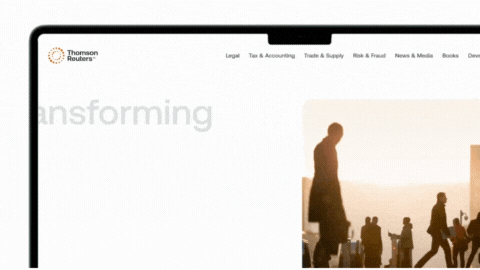The role of AI in reshaping how legal work is priced and delivered
Highlights
- The traditional billable hour is being challenged by outcome-based pricing. This shift is accelerated by AI, prompting firms to re-evaluate how they price their services, to reflect value and efficiency.
- Clients increasingly seek predictability and transparency, driving the adoption of alternative fee arrangements such as outcome-based pricing. These models align fees with results, enhancing trust and satisfaction by focusing on value rather than time spent.
- AI enables the shift to fixed-fee models by helping firms recover revenue from unbilled tasks and ensuring consistency. However, firms must address challenges such as maintaining quality control, ensuring ethical oversight, and new training methods for junior lawyers.
The billable hour has long served as the standard pricing model for legal services, valued for its familiarity, measurability, and deep integration into law firm economics. But as artificial intelligence (AI) reshapes legal work processes, firms are considering charging for value. Outcome‑based pricing is emerging as a viable alternative, offering clients more predictability and aligning fees with results rather than time.
This shift is not just about efficiency; it’s about trust, transparency, and the evolving expectations of legal clients. While the transition is still in its early stages, momentum is building. Firms that embrace AI technology are well equipped to meet the demands of a changing market.
Jump to ↓
The appeal of outcome-based pricing
Maintaining standards in AI-Assisted legal practice
The competitive advantage of outcome-based pricing
A legacy model under scrutiny
The billable hour has its origins in the early 20th century, when Reginald Heber Smith introduced time tracking at Boston Legal Aid to better allocate limited resources. By the 1960s, it had become the dominant billing method across large law firms, offering a standardized way to measure productivity and profitability.
Yet the model has long been criticized for misaligning incentives. Lawyers are rewarded for time spent, not necessarily for outcomes achieved. This can lead to inefficiencies, inflated costs, and a lack of transparency, all factors that undermine client trust.
Despite concerns, the billable hour remains due to internal compensation structures, legacy systems, and cultural norms. While alternative models have been considered for some time, their widespread adoption has been slow. However, experts are seeing a renewed interest in the popularity of alternative fee arrangements (AFAs) due to advances in AI technology.
The rise of AFAs
Outcome‑based pricing is part of a broader category known as AFAs. These include:
- Flat fees: A fixed price for a defined scope of work.
- Capped fees: A maximum fee limit, with hourly billing below the cap.
- Blended rates: A single hourly rate across multiple timekeepers.
- Hybrid models: Combinations of hourly and fixed pricing.
AFAs are becoming more popular with corporate legal departments, which increasingly favor models that reflect the value of the solution rather than the time spent delivering it. According to the Legal Department Operations Index, there is growing interest in AFAs as a way to improve cost control and foster collaboration.
Law firms are responding by forming dedicated teams to support AFA implementation. These teams work closely with clients to define scope, set expectations, and ensure that pricing aligns with business goals. AI plays a key role in this process, enabling firms to streamline workflows, reduce costs, and deliver more consistent outcomes.

AI news and insights
Industry-leading insights, updates, and all things AI @ Thomson Reuters
Join community ↗The appeal of outcome-based pricing
Outcome‑based pricing reverses the traditional model by charging for results rather than time. Firms bill based on outcomes like winning a case, closing a deal, or completing a regulatory filing. This approach provides several advantages:
- Predictability: Clients know upfront what they’ll pay, making budgeting easier and reducing billing disputes.
- Value alignment: Fees are tied to outcomes, encouraging firms to focus on strategic, high-impact work.
- Client satisfaction: Clients feel they’re paying for results, not inefficiencies or administrative overhead.
As AI tools automate routine tasks such as document review and legal research, clients are questioning why they should continue paying hourly rates for work that can be completed faster and more efficiently. Outcome‑based pricing better reflects the evolving nature of legal work and the value firms provide.
Reclaiming revenue through AI
Despite negative perceptions, AI strengthens the traditional legal business model by helping firms recover lost revenue and improve operational efficiency. Recent white paper How do I keep my hours billable with GenAI highlights how firms lose significant revenue annually due to unbilled time on low‑value tasks. AI addresses this by automating repetitive work, allowing lawyers to concentrate on strategic, billable tasks.
Beyond efficiency gains, AI enhances matter management, accelerates turnaround times, and improves forecasting accuracy. This enables firms to offer competitive pricing while maintaining profitability and makes the billable hour more transparent and aligned with client expectations.
AI also supports consistent outcomes essential for outcome‑based pricing. By accurately predicting the scope and duration of legal work, firms can confidently offer fixed or value‑based fees, building trust and strengthening long‑term client relationships.
Maintaining standards in AI-Assisted legal practice
Transitioning to outcome‑based pricing presents challenges, particularly in maintaining quality and reliability, especially when AI is involved. Clients need assurance that AI‑assisted work is accurate, ethical, and well‑managed. This requires clear communication, robust oversight, and a commitment to transparency.
Litigation presents a unique challenge. Outcomes are inherently uncertain, making it difficult to structure fees around results. Firms must balance risk with accountability to ensure pricing models remain fair and sustainable.
Internally, firms must rethink how they train and supervise junior lawyers. Structured mentoring is crucial as AI helps associates take on complex work earlier in their careers. Developing sound legal judgment and client advisory skills requires more than technical proficiency; it demands thoughtful guidance and real-world experience.
The competitive advantage of outcome-based pricing
Outcome‑based pricing is not yet a replacement for the billable hour. However, there clearly is a growing preference for billing models that align more closely with client needs and the realities of modern legal work. AI is accelerating this evolution, allowing firms to deliver greater value more efficiently and rethink their pricing strategies.
To succeed, firms must balance innovation with accountability by investing in quality control, ethical oversight, and transparent client communication. To support new ways of working they also need to reimagine internal structures such as compensation models and professional development.
Ultimately, the future of legal billing will be shaped by client demand. As expectations shift and technology advances, firms that adopt outcome‑based pricing may be better positioned to deliver value, build trust, and thrive in a competitive market.
Download the white paper The AI‑driven future of legal efficiency to learn how firms are preparing for the next phase of legal service delivery.

White paper
The AI-driven future of legal efficiency: How can law firms reclaim millions in lost revenue while enhancing client value?
Access white paper ↗









